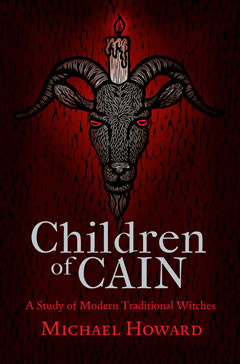Children of Cain. A Study of Modern Traditional Witches
Michael Howard
Three Hands Press, 2011. 317 p.
Three Hands Press, Children of Cain
Michael Howard is well known as author of books on magic in a broad sense and as editor of The Cauldron magazine. He has been around for decades, and knows many people involved in magic and witchcraft. His sources include personal conversations with members of the traditions he studied. There may be more, but subject in this volume are publicly known traditions of witchcraft.
Wicca is the best known branch of Witchcraft, since the 1950’s. When Gerald Gardner published his books on Wicca and claimed to have been initiated in an existing tradition, that raised scepticism and disbelief. The abolition of the Witchcraft Act in 1951 not only brought Wicca into the light, but several other traditions surfaced. Other people than Gardner claimed to be a member of an existing tradition. Claimed to have been initiated in an existing tradition, for instance in a family tradition. The initiation-by-grandmother story is not uncommon, although sometimes quite easy to refute. It is far more difficult to proof that a tradition did exist before 1930. The history of Wicca and its origins have been studied quite extensively now by authors such as Ronald Hutton and Philip Heselton, but there are other traditions of Modern Witchcraft. Maybe pre-Gardnerian, and certainly non-Wiccan. Those have met scepticism and disbelief too, and not many people know some still exist. Michael Howard with this volume presents seven traditions:
– The Clan of Tubal Cain
– The Regency
– The Pickingill Craft
– The Horse Whisperers
– American Traditional Witches
– The Sabbati Craft
– The Old Craft Today.
A chapter of introduction and a glossary add much to the chapters on the individual traditions. The bibliography shows what has been written on the subject, in old and new books, magazine articles and privately published and unpublished studies. (An index would have come handy).
The starter question in the preface is ‘What is a witch?’. The Welsh alone, in the early 20th century, distinguished between three kinds of witches, or more. And what is ‘Traditional Craft’? ‘Traditional’ in ‘Traditional Craft’ refers to ‘something based on or obtained by tradition, or resembling that of an earlier period of history’. Or in the words of Andrew Chumbley: ‘an echo of an inner resurgence of knowledge’. Howard: “Therefore we have a tradition of knowledge, beliefs and rituals either passed down within the context of a family, a hereditary lineage, or based on experience and practices established over a long period of time by a group or individuals. This period could be fifty, a hundred or a hundred and fifty years.” The word ‘witch’ dates back to centuries earlier and the practice of magic to at least classical Greece and Rome.
There are major differences between ‘modern neo-pagan Wicca’ and traditional and historical witchcraft. And between Wicca and other types of modern witchcraft. The main difference is probably the view on witchcraft / Witchcraft being a religion or not. With as close second the using of curses that is a no-no for most Wiccans, but not for many non-Wiccan witches. Or working outside and robed, rather than indoors and skyclad.
Howard describes each of the traditions, their history, the tools they use, their ways of using magic, performing rituals and so forth. There have been charismatic leaders and egotrippers (sometimes combined in one person), clashes between characters, and disputed successions. There may have been actual historical links to witches and witchcraft in earlier centuries and countries, or maybe stories have been made up. But when magic really works, when rituals have effect and may be described as ’the best I’ve ever experienced’, is it important what the background is? Yes, and no. Yes, we want to be able to discern frauds, and we don’t live in a fairy tale. Knowing the background of a practice is part of the training in magic. And no: the essence of the Craft is recognizing without words what it’s all about and experiencing the mystery together. All witchcraft traditions may be remnants of older traditions, of which each tradition kept just a part alive. (Or maybe they’ve been made up on the same basis of folklore). Studying these traditions may help to see the whole picture, and it may add to our practices to know more of the workings of other traditions. Thank you, Michael Howard, for gathering this wealth of information.

